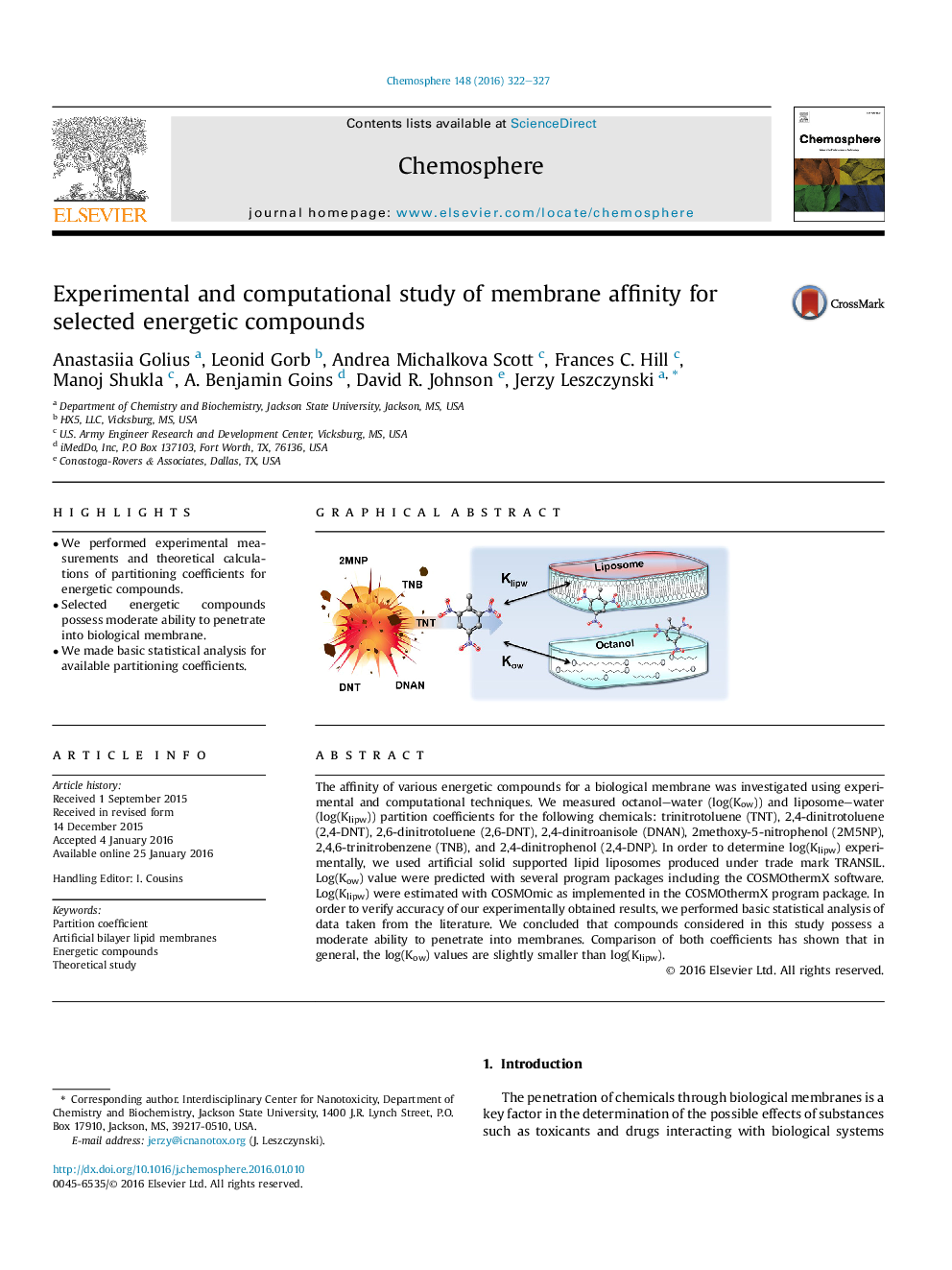| Article ID | Journal | Published Year | Pages | File Type |
|---|---|---|---|---|
| 4407823 | Chemosphere | 2016 | 6 Pages |
•We performed experimental measurements and theoretical calculations of partitioning coefficients for energetic compounds.•Selected energetic compounds possess moderate ability to penetrate into biological membrane.•We made basic statistical analysis for available partitioning coefficients.
The affinity of various energetic compounds for a biological membrane was investigated using experimental and computational techniques. We measured octanol–water (log(Kow)) and liposome–water (log(Klipw)) partition coefficients for the following chemicals: trinitrotoluene (TNT), 2,4-dinitrotoluene (2,4-DNT), 2,6-dinitrotoluene (2,6-DNT), 2,4-dinitroanisole (DNAN), 2methoxy-5-nitrophenol (2M5NP), 2,4,6-trinitrobenzene (TNB), and 2,4-dinitrophenol (2,4-DNP). In order to determine log(Klipw) experimentally, we used artificial solid supported lipid liposomes produced under trade mark TRANSIL. Log(Kow) value were predicted with several program packages including the COSMOthermX software. Log(Klipw) were estimated with COSMOmic as implemented in the COSMOthermX program package. In order to verify accuracy of our experimentally obtained results, we performed basic statistical analysis of data taken from the literature. We concluded that compounds considered in this study possess a moderate ability to penetrate into membranes. Comparison of both coefficients has shown that in general, the log(Kow) values are slightly smaller than log(Klipw).
Graphical abstractFigure optionsDownload full-size imageDownload as PowerPoint slide
